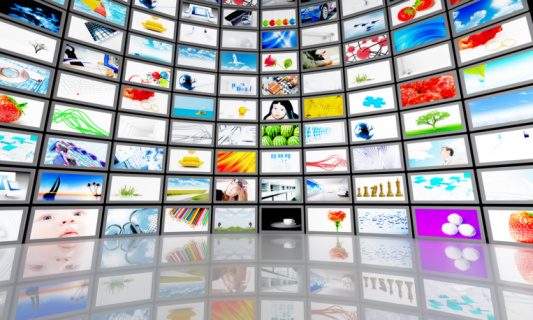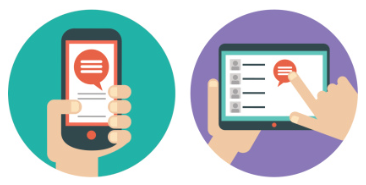Last week, we had a blog post which explained that the phenomenon of live-tweeting is a challenging and rewarding new way to use Twitter. Again, it is a mentally fatiguing and physically draining ordeal, but, when done correctly, you not only fulfill the role of real-time reporting, you initiate engagement and provide your followers with unique (and salient) information.
Now that we have issued the warnings multiple times, let’s take a look at some of the equipment and preparations you will need for optimal live-tweeting. 
Location, Location
First off, how will you watch the event? If you are going to watch the event in person at the venue, then you have to make sure that you are near a working outlet (you would be surprised how many “dead” outlets are in big venues).
Another possibility is that you are tweeting on the road. If so, as soon as you can, find the event’s network name and password. Always keep in mind that if one does not exist, you will probably have to tether to your own phone. The main goal is to ensure that all your tools for live-tweeting are connected to a reliable internet source.
Regardless of from where you are live-tweeting, multiple input devices and screens are a necessity. A good rule is to have at least 3 devices to tweet your content: One with a hard keyboard that allows you to quickly type, fact check, and grab a screen shot; a second that allows you to keep an eye on the ongoing conversations and event-related twitter streams; finally, a third device that allows you to both take and upload pictures to Twitter. In addition, always charge everything the day before and have backup ready: if one or more of your tools fail, or run out of juice, you need to have something ready that is capable of handling live tweeting tasks.

Crafting the messages
Every tweet in your live tweet stream should be crafted to pack a punch. There are 4 attributes essential to each of your tweets:
1. Succinctness. Keep your messages witty, and short. Leave enough room for retweets from your followers.
2. Accuracy. Both factually and time wise. Check your facts to make sure they are right, and time your tweets for the most impact.
3. Perfection. Meaning no typos. This can be quite a challenge when you are live tweeting, because you will feel pressed for time (if you don’t at some point, you are either doing it wrong or are not human).
4. #Hashtags. If you intend to live-tweet, especially for a highly watched event, the only way your tweets are going to get circulated is through using strategic hashtags. Most events will have their own official hashtag(s), but another great sources is to check Twitter’s trending tools. If you think up a genius hashtag that you think would trend, then by all means go for it.
One great way to keep track of the conversations revolving around an event is to make use of a tweet manager like SocialFlow, Hootsuite, or TweetDeck. In addition, consider keeping a document file open (such as TextEdit or notepad). This is where you can store reusable hashtags and links that you can quickly copy and paste (this little shortcut becomes a huge time saver the longer you are live tweeting).
A great trick: Pre-build tweets
Tweeting breaking news, a witty observation, or a salient thought is what will bring your Twitter account the most attention. If you are attending an event such as an awards ceremony (e.g. Oscars) or a product announcement (like Amazon’s fire), you can build your tweets in advance, which will both save you time and give you a jump on tweeting announcements.
However, if you are prone to mis-clicks, then it is better to only write your tweets during the event. Inadvertent tweets will not only cost you followers, but careers have been ended over wrong tweets on the wrong account.
Don’t . . .
Do not tweet for the sake of tweeting. Stating the obvious (lots of celebs at the #Oscars) or repeating what everyone else is saying (retweet: LOTS of Celebs at #Oscars) is not the point of live tweeting. You want to hinge onto the shocking moments and the big news. Don’t let mundane tweets turn your messages into white noise.
Also, never underestimate how valuable a photo with a tweet can be. Your followers’ streams will pick up your photos, and people are highly more likely to retweet or favorite your messages if they include a photo. Besides, the age-old saying holds true: a picture is worth a thousand words, and that can get the point across better than some 140 character tweets.
In summary, you should approach live tweeting with energy, care, and conviction. Twitter is a fantastic platform to share insights on live events as well as for real time information. If sharing insights, news, and salient commentary is what you like to do, then that is why you should live-tweet. Coincidentally, if you keep practicing your live-tweeting skills, the more people will come to value your live-tweeting updates and commentary. With time, patience, and perseverance, in the long run, you will very likely be rewarded with more followers, as well as become a strong player in the world of social media reporting.
Source: Mashable


